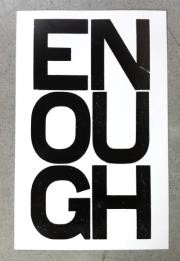There is a lot to be learned from the 21st edition of arteBA in Buenos Aires.
1. One art fair at a time can be a good thing. In contrast to art fair weeks with multiple, concurrent art fairs, arteBA held the spotlight with no competing fairs, which led to an intimate and enjoyable experience for collectors. The city of Buenos Aires offers plenty to capture your mind and eyes, including: Fundación Proa, an amazing contemporary art museum; Museo de Arte Latinoamericano de Buenos Aires (MALBA), a must-see for Latin American art; Museo Nacional de Bellas Artes, a survey of international art; and many sights of the city like Cementerio de Recoleta and Centro Cultural Recoleta. Given this full agenda of sights to see, not having to worry about multiple fairs frees you to enjoy everything the city has to offer at an enjoyable pace.
2. Surrounding events enrich the experience. The 98 galleries showing at arteBA gave collectors an expansive look at Latin American artwork and a great opportunity to get a good deal; additionally, surrounding events organized by the fair with local spaces added energy and enrichment to the experience.
3. A dynamic art scene lives in Buenos Aires, Argentina. Local spaces in Buenos Aires range from institutions like MALBA and PROA to lively artist residencies like Boulogne Sur Mer Art-Bulding. Nascent galleries with international vision are beginning to take hold. For example, Peña Galería recently opened a beautiful space in Recoleta. Make sure to map their address before visiting, as the underground space is hidden behind a nondescript wood-paneled door. The gallery features emerging artists and organized a show in New York City earlier this year. Rounding out the scene, established galleries display interesting works, most notably at Ruth Benzacar Gallery.
4. There is much great Latin American art to be seen. Below are some quick pictures from the events.




 RSS
RSS
